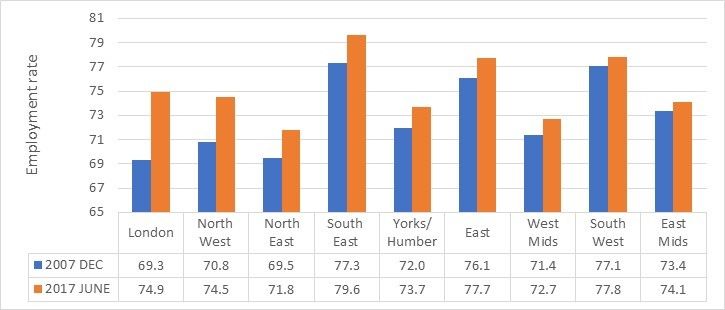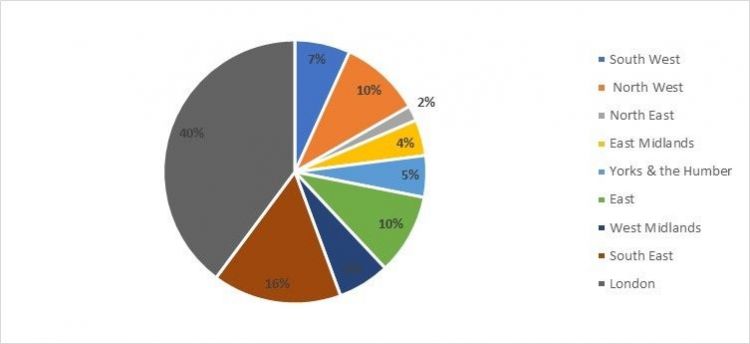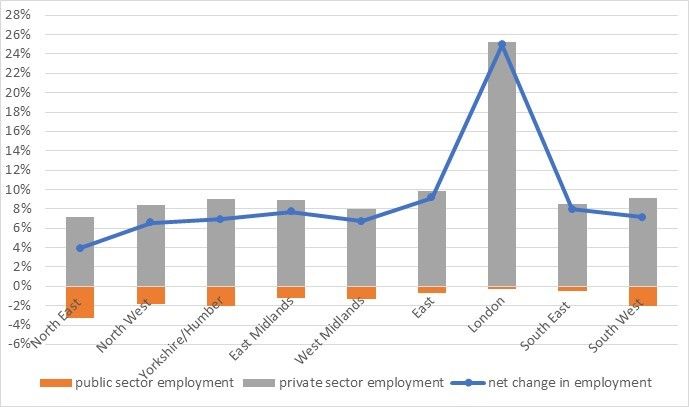Employment: What’s happening at the regional level?

The data below takes December 2007 as a starting point, just before the recession hit the UK, and compares it to the latest available 2017 data.
It illustrates that prior to the downturn, the South East, South West and East of England had the highest employment rates (well above the average) and they continue to do so. We also see a 5.6 percentage point increase in the employment rate in London, way ahead of any other region, though the employment rate in London is still below the UK average.
Regional Employment rates 2007-2017

Of the 2.3 million net increase in jobs in England since 2007, 910,000 are in London. When adding the South East to London the total increase is 1.3 million jobs, over half the net growth in employment.
Regional share of employment growth 2010-2017

We can also look at employment change from 2010, when the public sector faced massive spending cuts in the name of austerity by the coalition government, and there were corresponding public sector job cuts. In 2010 there were 5.62m working in the public sector. By 2017, this was just 5.22m a loss of around 400,000 public sector jobs.
The graph below shows how the percentage gains between 2010 and 2017 in total employment in each region is allocated between private sector gains and public sector job losses. The data excludes the effects of major reclassifications to allow meaningful comparison.
Public and Private sector contributions to employment growth 2010-2017

All regions experienced public sector job losses, but the North East has been hit hardest, while experiencing less growth in private sector jobs.
London and the South East have had the smallest loss in public sector job losses, but London has simultaneously excelled in private sector jobs growth. So, public-sector job losses have further exacerbated the imbalance in regional jobs growth.
The South East still has a buoyant employment market with a rate of almost 80%, and London has experienced a high proportion of the increase in employment.
And it’s not just the quantity of jobs, it’s quality too. Our previous analysis showed London has not only seen the largest growth in employment, it has recorded the highest increase in the proportion of work that’s seen as ‘secure’.
Whereas the North East is becoming England’s hot spot for insecure work with two out of three new jobs in the last five years falling into this category.
That’s why we’re thinking about regional industrial strategies at the TUC. For us it means creating and sustaining great jobs in every part of the country.
The TUC is publishing new research on how to deliver regional industrial strategy in three diverse areas: Liverpool City Region, Tees Valley and Norfolk and Suffolk. Come and join us as we publish findings in our launch event - ‘Great Jobs in Great Places: New approaches to regional industrial strategy’. For further information click here
Stay Updated
Want to hear about our latest news and blogs?
Sign up now to get it straight to your inbox
